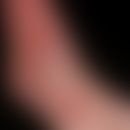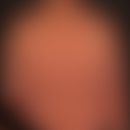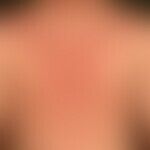Synonym(s)
HistoryThis section has been translated automatically.
DefinitionThis section has been translated automatically.
Rare, acute and severe systemic disease, occurring only in male adolescents, accompanied by a considerable feeling of illness and high fever, under the picture of an extensive acne conglobata with melting, pyoderma-gangraenosum-like, large-area ulcerations of the skin resulting from acneefllorescence, accompanying arthritis, heptomegaly, neutrophilic leukocytosis and massively increased inflammatory parameters.
You might also be interested in
EtiopathogenesisThis section has been translated automatically.
Etiopthogenesis is unknown. Excesses of androgen and immunological disorders seem to play a role.
ManifestationThis section has been translated automatically.
Exclusively occurring in male adolescents between the ages of 13 and 16.
ClinicThis section has been translated automatically.
Within a few weeks a most severe form of acne develops with extensive, purulent and bleeding skin necroses due to melting of the acne flora, high fever, polyarthralgia, hepatosplenomegaly, leukocytosis with neutrophilia, proteinuria and severe high fever general symptoms and massively increased inflammatory parameters (CRP, BSG).
In some cases aseptic bone necrosis is observed ( SAPHO syndrome); potentially associated are acute gastroenterological diseases such as: acute abdomen, ulcerative colitis, Crohn's disease.
Accompanying possible: erythema nodosum.
Some cases of acne fulminans have been described under isotretinoin therapy.
LaboratoryThis section has been translated automatically.
BSG and CRP elevation, pronounced neutrophilic leukocytosis 9,000-30,000/μl. Possible anemia, circulating immune complexes, proteinuria.
HistologyThis section has been translated automatically.
Necrotic epidermis. A diffuse inflammatory infiltrate of neutrophil granulocytes, lymphocytes and some plasma cells is found in the upper and middle dermis. Also giant cells. Hemorrhages in dermis and fatty tissue are typical.
Differential diagnosisThis section has been translated automatically.
TherapyThis section has been translated automatically.
Remember! It is important that treatment with a glucocorticoid is sufficiently long. Duration: 2-4 months! This prevents a recurrence of the associated infectious arthritis.
General therapyThis section has been translated automatically.
External therapyThis section has been translated automatically.
Internal therapyThis section has been translated automatically.
- Combination of isotretinoin (e.g. acne normin, see also retinoids) and systemic glucocorticoids. Start with prednisolone at a dosage of 1 mg/kg bw/day p.o. for 1 week, followed by isotretinoin 0.5 mg/kg bw/day p.o.
- First, the steroid dose is reduced and the individual isotretinoin dose is adjusted. Additional anti-inflammatory therapy with non-steroidal anti-inflammatory drugs such as paracetamol (e.g. Ben-u-ron) 2-3 times/day 500 mg p.o. or acetylsalicylic acid (e.g. ASS) 2-3 times/day 500 mg p.o. The use of systemic antibiotics (e.g. erythromycin or clindamycin) should be considered in individual cases. Note: The occurrence of acne fulminans a few weeks after initiation of systemic isotretinoin therapy is described in the literature. In these cases it is recommended to stop the preparation temporarily, otherwise proceed as described above.
- Alternative: If treatment with isotretinoin is not possible, treatment with dapsone should be considered as an alternative. Initial dose: approx. 50 mg/day p.o., if necessary increase to 100-150 mg/day p.o. with good tolerance.
Notice! Exclude glucose-6-phosphate dehydrogenase deficiency before, check Met-Hb!
Alternative: Consider the use of Ciclosporin in the usual dosage (2.0-3.0mg/kgkgKG/Tg p.o.) if necessary in combination with prednisolone in a medium dosage (see above).
LiteratureThis section has been translated automatically.
- Burns RE, Colville JM (1959) Acne conglobata with septicemia. Arch Dermatol 79: 361-363
- Giavedoni Pet al (2014) Acne fulminans successfully treated with cyclosporine and isotretinoin. J Am Acad Dermatol 70:e38-e39
- Grando LR et al (2014) Pseudo-acne fulminans associated with oral isotretinoin. On Bras Dermatol 89:657-659
- Jansen T, Romiti R, Plewig G (1999) Acute severe acne in a female patient (acne fulminans?) Br J Dermatol 141: 945-947
- Jansen T, Plewig G (1998) Acne fulminans. Int J Dermatol 37: 254-257
- Melnik B et al (2007) Abuse of anabolic-androgenic steroids and bodybuilding acne: an underestimated health problem. J Dtsch Dermatol Ges 5: 110-117
- Palleschi GM et al (2013)A case of acne fulminans presenting with systemic symptoms resembling acute appendicitis with maculopapular purpura-like eruption exacerbated by systemic steroids. Dermatol Ther 26:367-369
- Peleg H et al (2014)Radiologic features of acne fulminans. Isr Med Assoc J 16:393-394
- Wakabayashi M et al (2011) A case of acne fulminans in a patient with ulcerative colitis successfully treated with prednisolone and diaminodiphenylsulfone: a literature review of acne fulminans, rosacea fulminans and neutrophilic dermatoses occurring in the setting of inflammatory bowel disease. Dermatology 222: 231-235
Incoming links (5)
Dermatitis-arthritis syndromes; Doping acne; Facial swelling, differential diagnosis; Rosacea fulminans; Sapho syndrome;Outgoing links (17)
Acetylsalicylic acid; Acne conglobata; Antibiotics; Ciclosporin a; Clindamycin; Dadps; Doping acne; Erythema nodosum; Erythromycin; Glucocorticosteroids systemic; ... Show allDisclaimer
Please ask your physician for a reliable diagnosis. This website is only meant as a reference.








